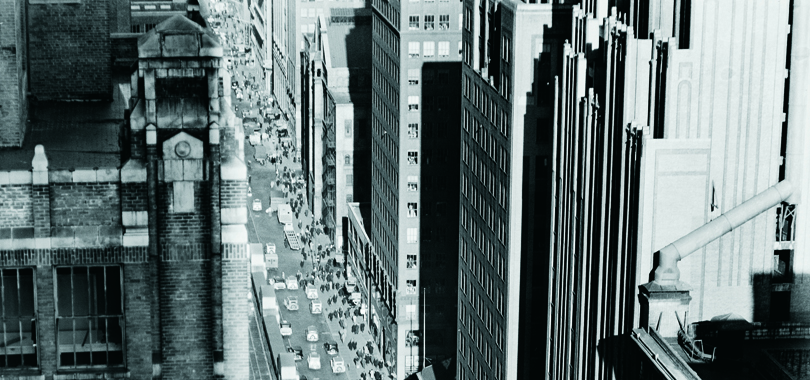Before
The Grid
The
1811 Plan
BUILDING
THE GRID
19TH-CENTURY
DEVELOPMENT
20th century–
Now
living on
the grid
other
Grids
Modern Reforms, 20th Century—Now

“The Grid defines a new balance between control and de-control in which the city can be at the same time ordered and fluid, a metropolis of rigid chaos.”
If the construction of the Manhattan grid is a 19th-century story, the 20th-century sequel tells of the grid’s erosions, alterations, and erasures. Although the relentlessness of the 1811 plan had been eased by exceptions like Central Park, technological advances in the new century exaggerated the grid, as skyscrapers climbed higher with the help of steel skeletons and passenger elevators, and developers sought to maximize their land values by building out to the edges of their lots. Critics of the grid continued to fight this density with wholesale urban reforms, replacing vast swaths of the grid with superblocks beginning in the 1930s. Read More Two major zoning laws formalized long-standing complaints about the grid’s density and lack of open space, and one of these, the 1961 Zoning Resolution, ultimately sought to undermine its defining qualities: the continuity of the street wall, the uniformity of the rectilinear pattern, and the density of building coverage.
By the end of the 20th century, the grid had become less vulnerable to attack. The heyday of the tower-in-the-park housing model had come and gone, and today the density of existing construction and high real estate values make it prohibitively expensive and logistically complicated to clear multiblock tracts of land for superblock projects. Instead, the prevailing trend in Manhattan has been to reassert the grid, as the recent development of Battery Park City and the current proposal to rebuild lower Manhattan demonstrate. Show Less
